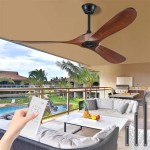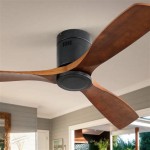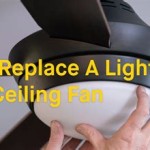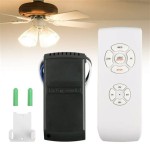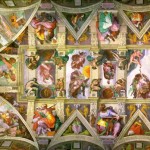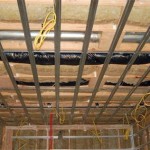Hunter Ceiling Fan Replacement Motor: A Comprehensive Guide
Ceiling fans offer a blend of functionality and aesthetics, providing both cooling and decorative elements to a living space. A critical component of any ceiling fan is its motor, the driving force behind the fan's rotation and air circulation. Over time, a ceiling fan motor may fail due to various factors, necessitating a replacement. Hunter, a well-known brand in the ceiling fan industry, offers a range of replacement motors designed to restore functionality to their fans. This article provides a comprehensive guide to Hunter ceiling fan replacement motors, covering essential aspects to assist in a successful replacement process.
The lifespan of a ceiling fan motor can vary depending on usage, environmental conditions, and the quality of the initial motor. Common signs of motor failure include unusual noises such as humming, clicking, or grinding, a reduction in fan speed despite being set at a higher setting, the fan blades stopping intermittently, or the motor emitting a burning smell. Addressing these issues promptly is crucial to prevent further damage to the fan and to ensure the safety of the occupants.
Determining the Need for a Motor Replacement
Before proceeding with a motor replacement, it is important to ascertain whether the motor is indeed the source of the problem. Other issues, such as a faulty capacitor, loose wiring, or problems with the fan's control system, can mimic the symptoms of a failing motor. A visual inspection of the fan can help identify obvious problems like damaged wiring or loose connections. Using a multimeter to test the capacitor's functionality and voltage output to the motor can also help rule out other potential causes. If these checks are inconclusive, and the symptoms strongly suggest motor failure, then replacing the motor becomes the most viable option.
The troubleshooting process should always begin with disconnecting the power supply to the ceiling fan at the circuit breaker. This precautionary measure is crucial to prevent electrical shock during the inspection and repair process. Once the power is off, carefully examine the wiring connections within the fan's housing, ensuring that all connections are secure and that there are no signs of corrosion or damage. Check the capacitor for any signs of bulging or leaking, which would indicate a faulty component. If the wiring and capacitor appear to be in good condition, the next step is to manually rotate the fan blades to check for any resistance or binding. Excessive resistance could indicate a problem with the motor bearings or internal components.
If after performing these troubleshooting steps, the motor still exhibits the symptoms of failure, then it is likely that a replacement is necessary. It's important to note that attempting to repair a damaged motor is generally not recommended, as it requires specialized knowledge and tools, and may not result in a long-term solution. Replacing the motor with a new, compatible unit is usually the most cost-effective and reliable approach.
Selecting the Correct Replacement Motor
Choosing the right replacement motor for a Hunter ceiling fan is paramount to ensure proper functionality and compatibility. Hunter offers a variety of motors, each designed for specific fan models and sizes. Identifying the correct motor requires careful attention to several key factors. The first step is to locate the fan's model number, typically found on a label attached to the motor housing or on the fan's top canopy. This model number is crucial for cross-referencing with Hunter's parts catalog or website to determine the exact replacement motor needed.
In addition to the model number, consider the motor's specifications, including its voltage, wattage, and RPM (revolutions per minute). These specifications should match those of the original motor to ensure optimal performance. Using a motor with incorrect voltage or wattage can damage the fan's internal components or result in unsatisfactory performance. The motor's physical dimensions and mounting configuration are also important considerations. The replacement motor must fit properly within the fan's housing and align with the existing mounting points.
Hunter provides detailed product information and compatibility charts on their website and in their parts catalogs. These resources can be invaluable in identifying the correct replacement motor. If uncertainty persists, contacting Hunter's customer service or consulting with a qualified electrician is recommended. Providing the fan's model number and a description of the problem will allow them to assist in identifying the appropriate replacement motor. Purchasing the replacement motor from an authorized Hunter dealer ensures that it is a genuine Hunter product and that it comes with a warranty.
The Motor Replacement Process
Replacing a ceiling fan motor is a task that requires a degree of electrical and mechanical aptitude. While many homeowners with DIY experience can perform the replacement, those uncomfortable working with electrical wiring or unfamiliar with ceiling fan mechanics should seek the assistance of a qualified electrician. Safety is paramount, and improper wiring or installation can pose a serious electrical hazard.
Before commencing the replacement process, disconnect the power supply to the ceiling fan at the circuit breaker. Verify that the power is off by testing the fan's wiring with a non-contact voltage tester. Once the power is confirmed to be off, the fan can be carefully disassembled. The first step is typically to remove the fan blades, followed by the light fixture (if applicable), and then the fan's canopy. The canopy is the cover that conceals the wiring connections and mounting bracket.
With the canopy removed, carefully disconnect the wiring connections to the old motor. It is crucial to note the position and color of each wire to ensure correct reconnection to the new motor. Taking photographs of the wiring configuration before disconnecting anything can serve as a helpful reference. Once the wiring is disconnected, the old motor can be removed from the fan's housing. This may involve unscrewing mounting screws or releasing retaining clips.
Install the new motor in the reverse order of removal. Secure the motor to the fan's housing using the appropriate mounting hardware. Reconnect the wiring, carefully matching the wire colors and positions to the original configuration. Ensure that all wiring connections are secure and that there are no loose strands of wire. Once the wiring is complete, carefully tuck the wires back into the fan's housing and reattach the canopy. Reinstall the fan blades and light fixture (if applicable). Finally, restore the power supply at the circuit breaker and test the fan to ensure that it is functioning correctly.
If the fan does not operate correctly after the motor replacement, immediately disconnect the power supply and recheck the wiring connections. Ensure that all connections are secure and that the wires are properly matched. If the problem persists, consult with a qualified electrician to diagnose and resolve the issue.
During the replacement process, it is advisable to wear safety glasses and gloves to protect against debris and electrical shock. Working on a stable ladder or platform is also essential to ensure safety and stability. Avoid working alone, and have someone nearby who can assist if needed.
Hunter ceiling fan replacement motors offer a viable solution to extend the life of a ceiling fan. By carefully diagnosing the problem, selecting the correct replacement motor, and following proper installation procedures, homeowners can restore their fan's functionality and enjoy its benefits for years to come.

Top 6 Technical Faults With A Hunter Ceiling Fan

Hunter Suspended Ceiling Fan Motor Model 23856 Used Ebay

Hunter 52in Oakhurst Low Profile Ceiling Fan Replacement Motor Housing Cover Ebay

Hunter 23699 Ceiling Fan Oem Replacement Parts From Ereplacementparts Com

Hunter 23775 Ceiling Fan Oem Replacement Parts From Ereplacementparts Com

Hunter Locke 44 In Indoor Matte Silver Ceiling Fan Replacement Parts 1007537413 Ebay

Hunter Builder Ceiling Fan Replacement Parts New 52217 Snow White Buy 1 Or More Ebay

Hunter 23269 Ceiling Fan Oem Replacement Parts From Ereplacementparts Com

How To Fix A Ceiling Fan Hunter

Hunter Ceiling Fan Control Wire Harness Repairs Start Speed Capacitors Reverse Switches 240 V Genuine Parts
See Also

